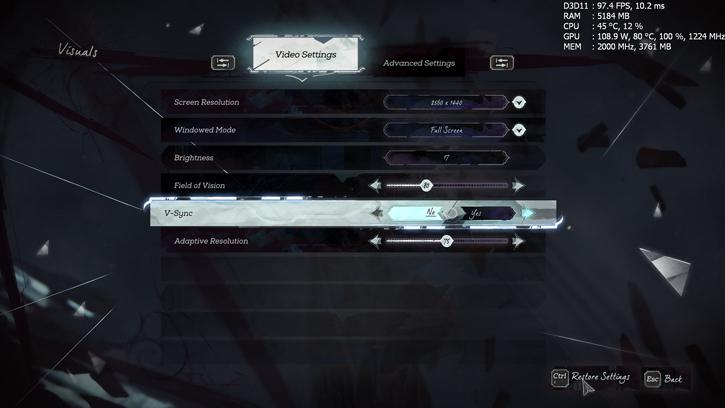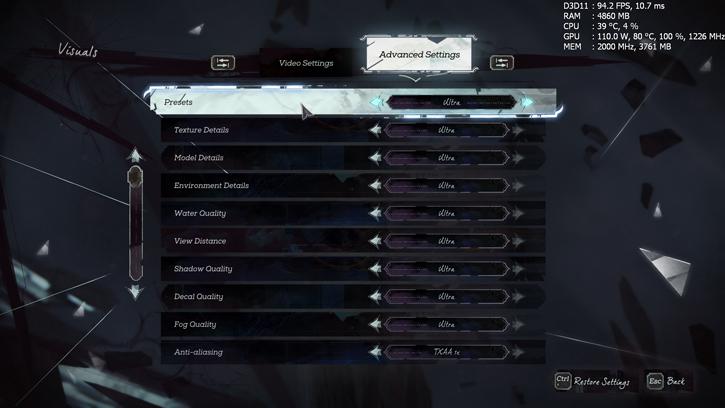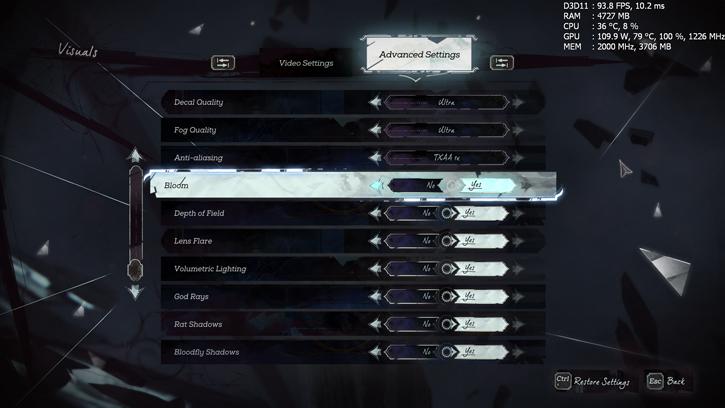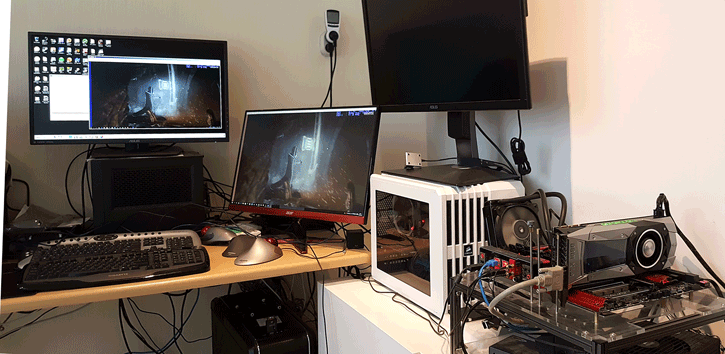Image quality settings and benchmark system
Image quality settings and benchmark system
We use a frametime run with the maxed out quality presets, ultra where we can and very high when we hit a maximum setting. We will test a good number of cards in this D3D11 title performance wise. We flick the maximum quality settings at High and Ultra before each resolution run and disable VSYNC. Games typically should be able to run in the 40 FPS range combined with your monitor resolution. From there on-wards you can enable/disable things if you need-more performance or demand even better game rendering quality.
Dishonored 2 offers many settings like FOV your typical v-sync turned on or off, HBAO+ support. You can choose to run in Windowed, Fullscreen or Borderless Windowed modes. Dishonored 2 also offers adaptive resolution, from 50-100% albeit at this point it does not seem to be working.
In the advanced settings segment you'll find more configuration options like Texture quality, model details, environment details, water quality, view distance, shadow quality, decal quality and fog quality can all be tweaked from Very Low to Ultra. Anti-aliasing comes in FXAA Low, FXAA High and TXAA flavours. Also bloom, depth of field, lens flare, volumetric lighting, god rays, and even specifically disable shadows for rats and bloodflies. We will test at Ultra Quality with TXAA at 1x. For testing HBAO+ has been turned off as this option is only available to Nvidia graphics cards.
The graphics cards tested
In this review we'll test the following cards at the best PC experience, a maxed out quality mode (Ultra and Very high wherever possible) with VSYNC OFF. The graphics cards used in this test:
- GeForce GTX 1050
- GeForce GTX 1050 Ti
- GeForce GTX 1060 (6GB)
- GeForce GTX 1070
- GeForce GTX 1080
- GeForce GTX 780 Ti
- GeForce GTX 960 (2GB)
- GeForce GTX 970
- GeForce GTX 980
- GeForce GTX 980 Ti
- GeForce GTX Titan
- GeForce Titan X (Maxwell)
- NVIDIA Titan X (Pascal)
- Radeon R9 285X (2GB)
- Radeon R9 380X (4GB)
- Radeon R9 390 (8GB)
- Radeon R9 390X (8GB)
- Radeon R9 Fury
- Radeon R9 Fury X
- Radeon R9 Nano
- Radeon RX 460 (4GB)
- Radeon RX 470 (4GB)
- Radeon RX 480 (8GB)
System Specifications & recommended drivers
Our test system is based on the eight-core Intel Core i7-5960X Extreme Edition with Haswell-E based setup on the X99 chipset platform. This setup is running tweaked at 4.30 GHz. Next to that we have energy saving functions disabled for this motherboard and processor (to ensure consistent benchmark results). We use Windows 10 all patched up. Each card runs on the same PC with the same operating system clone.
The drivers are:
- GeForce cards use the latest 375.76 driver (download drivers).
- Radeon graphics cards we used the latest AMD Radeon Crimson 16.11.3 Driver (download drivers).





